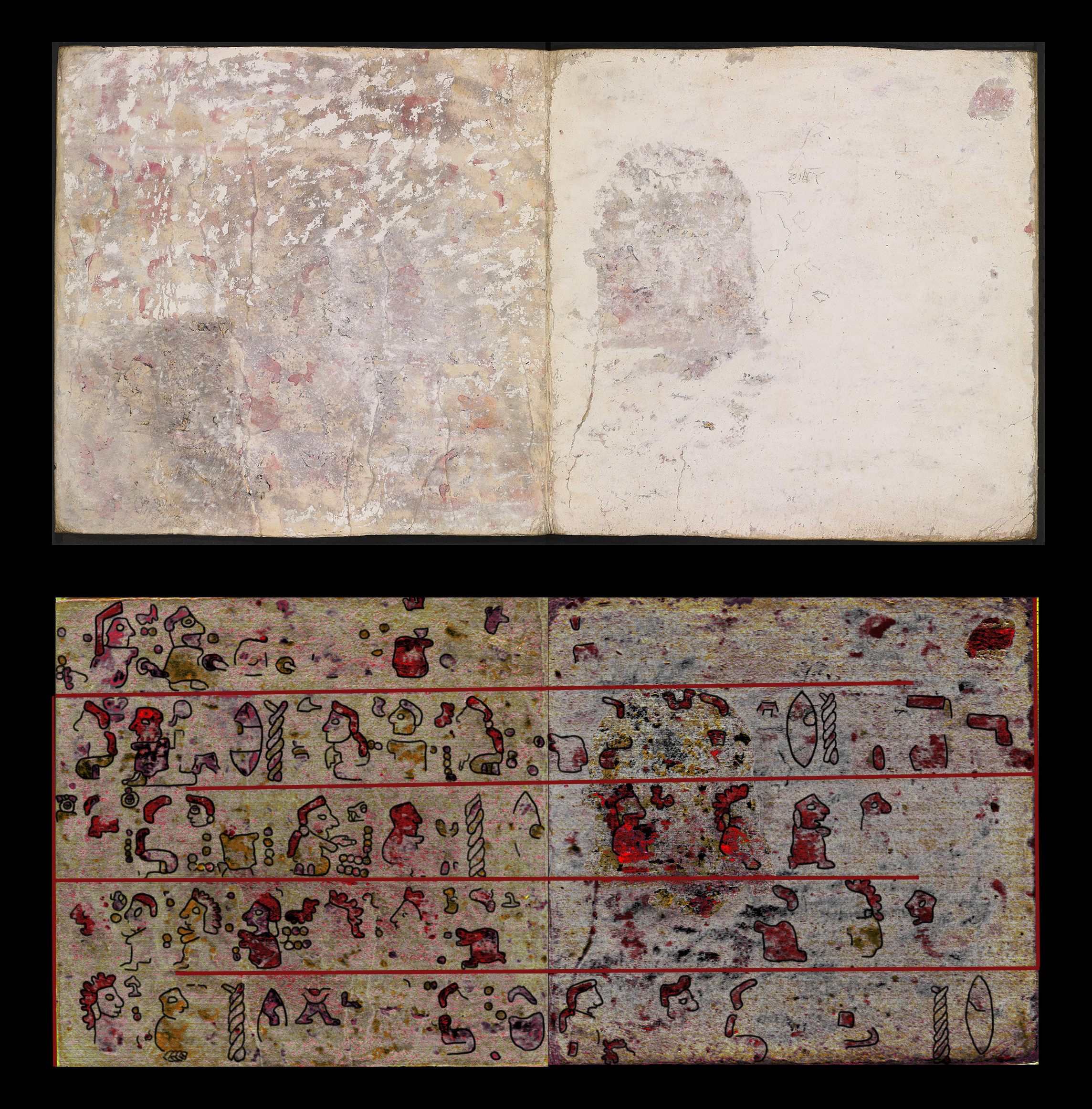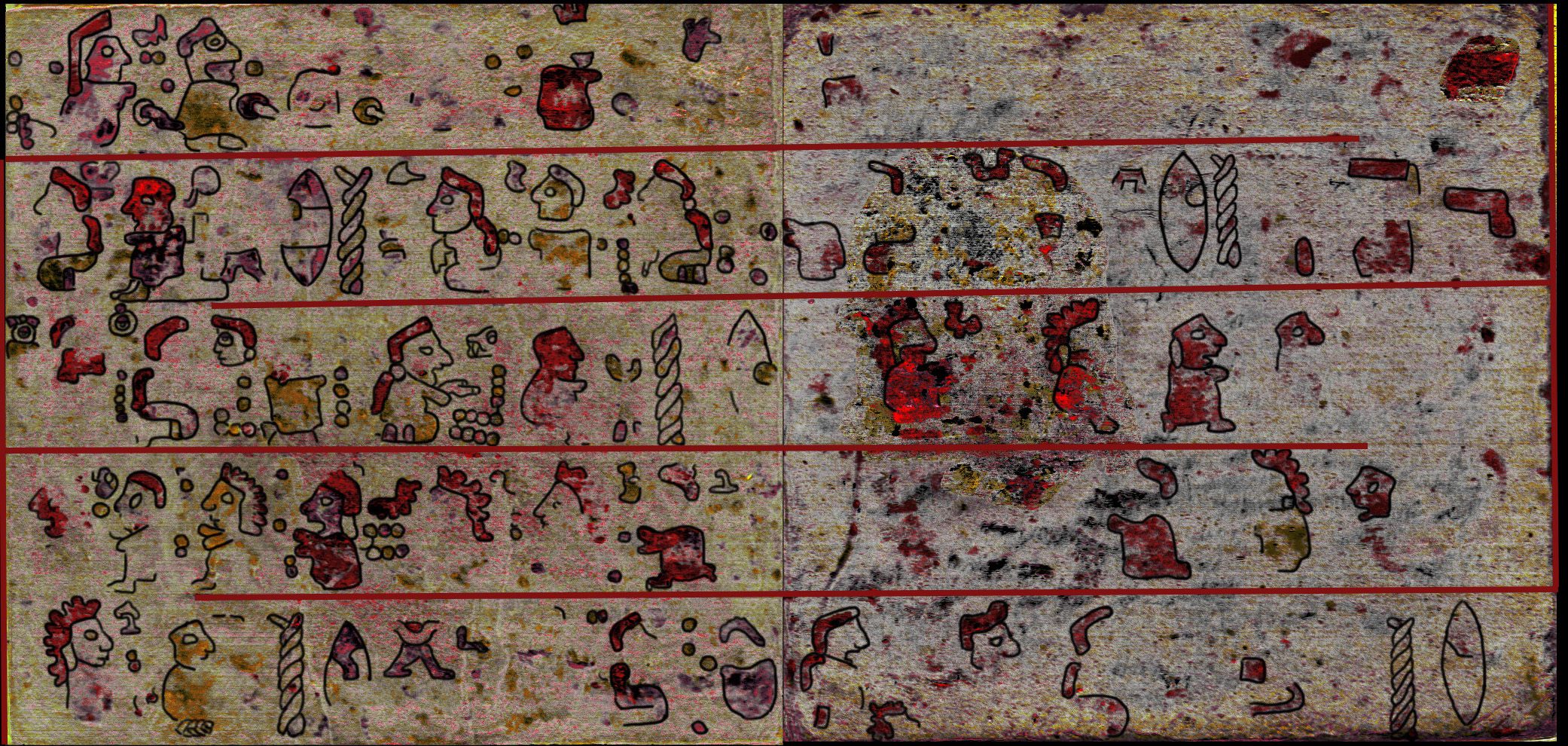Found: An Ancient Mexican Codex-Within-a-Codex
Researchers used lightwaves to discover a hidden palimpsest.

Top: the original page, Bottom: the document revealed beneath the surface. (Photo: Copyright © Journal of Archaeological Sciences: Reports, 2016 Elsevier/Used with Permission)
Thanks to a new high-tech imaging procedure, researchers at Oxford’s Bodleian Libraries have discovered a rare, pre-colonial Mexican manuscript hidden beneath the surface of an already ancient Mexican codex. According to findings recently published in the Journal of Archaeological Science: Reports, the lost manuscript has been hiding just under the surface for nearly 500 years.
The Selden Codex, a five-meter-long strip of deer hide that has been folded into a 20-page book that chronicles the wars and history of pre-colonial Mexico during the Mixtec era, was first given to the Bodleian Libraries back in 1654. Dating to around 1560, the document is written in a complicated system of brightly colored symbols and pictures, and is considered extremely rare, one of only 20-some records known to have survived from Mexico prior to Spanish colonization.

A page from the Codex Selden.(Photo: Copyright © Journal of Archaeological Sciences: Reports, 2016 Elsevier/Used with Permission)
But since the 1950s, researchers have suspected the codex was even more fascinating than it seemed to the naked eye.
Researchers working on the Selden Manuscript have long suspected that it was actually a palimpsest, or a document created by reusing and covering another work. After discovering the existence of older symbols hidden beneath the gesso surface of the codex in the 1950s, by simply scraping off the top layer, scientists have been trying to find a way to unearth the original document without destroying the existing writings.

A close up of some of the revealed pages. (Photo: Copyright © Journal of Archaeological Sciences: Reports, 2016 Elsevier/Used with Permission)
Thanks to a groundbreaking new process known as hyperspectral imaging, they have finally discovered that the Selden Codex indeed hides a unique new series of images and symbols.
Only seven of the pages were scanned, and while further study is required, the underlying writing seems to be a new genealogy, which could have links to another Mexican codex in the Bodleian collection. It is also hoped that the new images can further assist in interpreting known archaeological sites.















Follow us on Twitter to get the latest on the world's hidden wonders.
Like us on Facebook to get the latest on the world's hidden wonders.
Follow us on Twitter Like us on Facebook